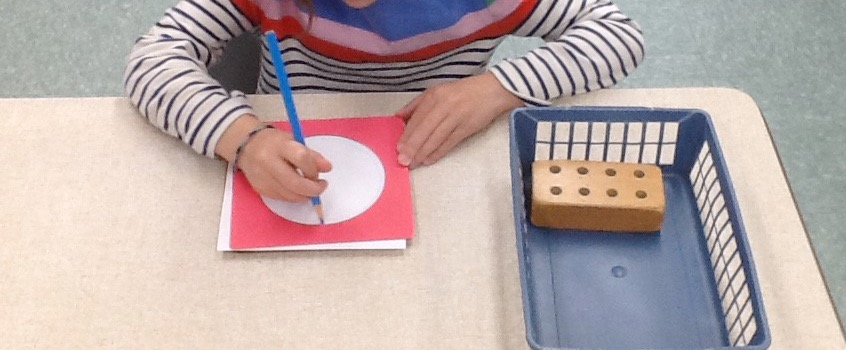
Simple geometric shapes and two or three colored pencils: who would imagine that such an unassuming combination could create such beautiful things. The metal insets draw the attention of the youngest children and still attract our most experienced students to create new combinations of color and shape.
There are ten different frames available: the circle, the square, the equilateral triangle, the rectangle, the ellipse, the oval, the quatrefoil, the pentagon, the curvilinear triangle and the trapezoid. Beginning with a single geometric shape, the child practices carefully tracing the inside edge of one of the inset frames. As he or she grows in proficiency in controlling the pencil, the child may rotate the frame to discover what heppens when one overlays shapes, or fill in the empty space with thin lines of other colors, or combine multiple different insets. The work, then, combines the physical skill of developing fine motor control in the hands and fingers, wtih a developing aesthetic sense as the child explores color, balance and design. As the child's fine motor control grows, his or her experiences with the metal insets become more complicated, making this a lesson that meets the child's interest over three years.
The metal insets are a preparation for handwriting and for geometry, but they are equally important as a material children use for creative design. Look for combinations of geometric shapes, the use of negative space, and experimentation with shading and coloring as your child grows in his or her comfort with this simple and elegant Montessori material.
#Language #FirstPlane #Primary #ForTeachers #ForParents #Curriculum
